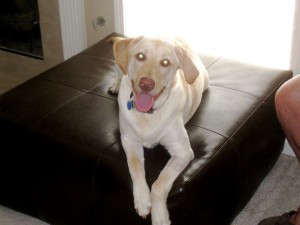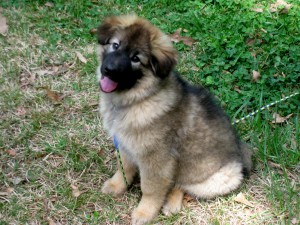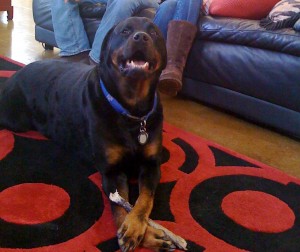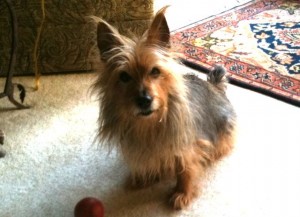 Of all the methods to teach a dog to lie down, capturing is the easiest, but it is seldom used because people do not understand or believe it will be effective.
Of all the methods to teach a dog to lie down, capturing is the easiest, but it is seldom used because people do not understand or believe it will be effective.
Capture is when you set up the environment for the behavior to occur, or just wait for the dog to perform the behavior, then you mark and deliver a treat. You don’t say anything, or offer a food lure, or provide any other input before the dog performs the target behavior.
Another reason my clients are hesitant to try and capture the down is because most people are determined to insert the word “down” when first teaching the behavior.
Telling dogs “down” does nothing to help the dogs learn the behavior. If anything it sends the dogs misinformation, because most people repeat the word, as if the word will help the dog to lie down.
Once the dog learns the behavior, you can slip the cue or command into the sequence, immediately before the dog performs the behavior. You’ll teach the dog the behavior first, then you teach the dog a command for the behavior.
You will need to condition a reward marker to use the capture method. If you are not familiar with reward markers, or capturing behaviors, please visit this page to learn how to condition an instant reward marker, and capture sit for folded arms, BEFORE you capture down.
Dogs sit numerous times every day, therefore “capture sit for folded arms” is very easy and effective. The exercise is as much a teaching exercise for the handler as it is for the dog. The handler learns about timing and how to teach a dog without a food lure, and without offering any physical input. The dog learns that he or she “makes” the marker occur. Once a dog understands this concept, you are ready to capture other, less frequent behaviors.
Assuming you have conditioned a reward marker, here are the steps to capture down. Teach down when your puppy dog is more likely to lie down, such as late in the evening or after exercise.
I like to do this when I am seated and watching TV, because I am lazy. 🙂
With your dog in the same area as you, you watch and wait for the dog to lie down, you mark the instant the dog’s belly touches the floor. Then toss a food treat on the floor, in between your dog’s front legs. Do this several times during a 2 hour period.
Do not speak to or touch your dog before, or immediately after he or she lies down. The only relevant events are belly touch floor, sound of the marker, food treat.
It may take more than one session of capturing the down before your dog catches on.
You can add the verbal command after your dog learns the behavior. You’ll know when your dog has “got it”. He or she will come over to you and plop down. When you notice this, do not mark the belly touch, just look at your dog. If your dog looks at you with that “hey stoooopid, I did it, where’s the marker and treat?”, then you can speak the word down, before the dog lies down. Repeat a few times, but now say the word “down” before your dog lies down. There you have it!
Happy Training!
Alan J Turner – Companion Animal Behavior Counselor and Trainer, Canine Specialization
How’s Bentley – Memphis, Collierville, Germantown TN
21st Century Canine Relationship Solutions
Group Dog Obedience Classes
Private Dog Training in Memphis TN
Reactive Dog Specialist





 Click the You Tube link below this text to see Harry, the
Click the You Tube link below this text to see Harry, the 
